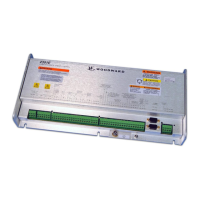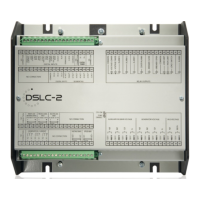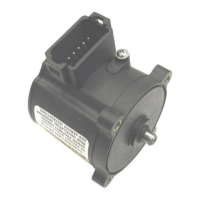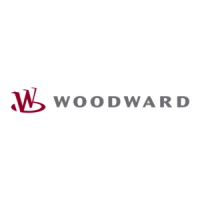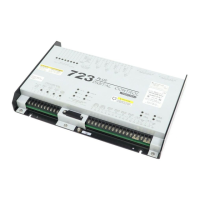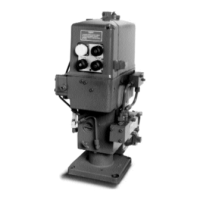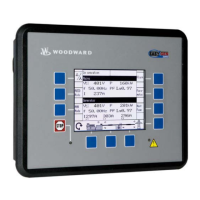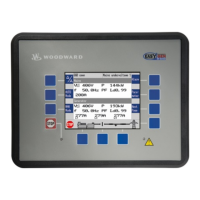Do you have a question about the Woodward CONTROL-505D and is the answer not in the manual?
General safety guidelines for operating and servicing equipment.
Guidelines for correct equipment usage and consequences of misuse.
Important safety alert symbols and definitions for hazard communication.
Precautions to prevent damage to static-sensitive electronic components.
Explains available service tool interfaces for the 505 control.
Primary tool for configuration, trending, and troubleshooting.
Provides communication data link between 505 and HMI/PC.
Manages files and applications on the 505 control.
Explains integration of other Woodward devices with the 505.
Generator synchronizer and load control functionality.
Linear electro-hydraulic actuator for turbine control valves.
Multi-function generator protection relay.
Protection/breaker control relay for generators.
Interfaces 505 to existing valve operators or actuators.
Senses real power produced by a generator or tie line.
Generator load control and synchronizer.
Applying redundant actuator systems for reliability.
Details application-specific notes and configurations for the 505.
Illustrates various control configurations and their functionality.
Explains methods of interfacing with the 505 control.
Describes the 505 service panel's keypad and display.
Details operation modes and user access levels for the service panel.
Explains navigation and customization of the 505 control.
Guidance on logging in and adjusting parameters within service menus.
Descriptions of various parameters adjustable within the service menus.
Explains PID controller basics and their parameters (P, I, D).
Details the effect of proportional gain on control response and offset.
Explains how integral action compensates for offset and improves response.
Describes derivative action's role in reducing stabilization time.
Shows how derivative action opposes process deviation for faster response.
Illustrates the combined effect of P, I, and D modes on control response.
Provides general guidance and examples for tuning PID controller gain settings.
General advice on troubleshooting hardware and OS issues.
Troubleshooting common problems caused by incorrect wiring connections.
Guidance on resolving issues with control adjustments and valve operation.
Addresses various other operating issues and their potential causes.
Details the physical and environmental specifications of the 505 control.
Outlines the software execution rates and parameters for the 505 control.
General safety guidelines for operating and servicing equipment.
Guidelines for correct equipment usage and consequences of misuse.
Important safety alert symbols and definitions for hazard communication.
Precautions to prevent damage to static-sensitive electronic components.
Explains available service tool interfaces for the 505 control.
Primary tool for configuration, trending, and troubleshooting.
Provides communication data link between 505 and HMI/PC.
Manages files and applications on the 505 control.
Explains integration of other Woodward devices with the 505.
Generator synchronizer and load control functionality.
Linear electro-hydraulic actuator for turbine control valves.
Multi-function generator protection relay.
Protection/breaker control relay for generators.
Interfaces 505 to existing valve operators or actuators.
Senses real power produced by a generator or tie line.
Generator load control and synchronizer.
Applying redundant actuator systems for reliability.
Details application-specific notes and configurations for the 505.
Illustrates various control configurations and their functionality.
Explains methods of interfacing with the 505 control.
Describes the 505 service panel's keypad and display.
Details operation modes and user access levels for the service panel.
Explains navigation and customization of the 505 control.
Guidance on logging in and adjusting parameters within service menus.
Descriptions of various parameters adjustable within the service menus.
Explains PID controller basics and their parameters (P, I, D).
Details the effect of proportional gain on control response and offset.
Explains how integral action compensates for offset and improves response.
Describes derivative action's role in reducing stabilization time.
Shows how derivative action opposes process deviation for faster response.
Illustrates the combined effect of P, I, and D modes on control response.
Provides general guidance and examples for tuning PID controller gain settings.
General advice on troubleshooting hardware and OS issues.
Troubleshooting common problems caused by incorrect wiring connections.
Guidance on resolving issues with control adjustments and valve operation.
Addresses various other operating issues and their potential causes.
Details the physical and environmental specifications of the 505 control.
Outlines the software execution rates and parameters for the 505 control.
| Category | Controller |
|---|---|
| Number of Digital Inputs | 16 |
| Number of Digital Outputs | 8 |
| Operating Temperature Range | -40 to 70 °C |
| Communication Ports | Ethernet |
| Processor Type | 32-bit |


